Abstract
During the last three decades, the impact of chemical pollution has focused almost exclusively on the conventional "priority" pollutants, especially those acutely toxic/carcinogenic pesticides and industrial intermediates displaying persistence in the environment. This spectrum of chemicals, however, is only one piece of the larger puzzle in "holistic" risk assessment. Another diverse group of bioactive chemicals receiving comparatively little attention as potential environmental pollutants includes the pharmaceuticals and active ingredients in personal care products (in this review collectively termed PPCPs), both human and veterinary, including not just prescription drugs and biologics, but also diagnostic agents, "nutraceuticals," fragrances, sun-screen agents, and numerous others. These compounds and their bioactive metabolites can be continually introduced to the aquatic environment as complex mixtures via a number of routes but primarily by both untreated and treated sewage. Aquatic pollution is particularly troublesome because aquatic organisms are captive to continual life-cycle, multigenerational exposure. The possibility for continual but undetectable or unnoticed effects on aquatic organisms is particularly worrisome because effects could accumulate so slowly that major change goes undetected until the cumulative level of these effects finally cascades to irreversible change--change that would otherwise be attributed to natural adaptation or ecologic succession. As opposed to the conventional, persistent priority pollutants, PPCPs need not be persistent if they are continually introduced to surface waters, even at low parts-per-trillion/parts-per-billion concentrations (ng-microg/L). Even though some PPCPs are extremely persistent and introduced to the environment in very high quantities and perhaps have already gained ubiquity worldwide, others could act as if they were persistent, simply because their continual infusion into the aquatic environment serves to sustain perpetual life-cycle exposures for aquatic organisms. This review attempts to synthesize the literature on environmental origin, distribution/occurrence, and effects and to catalyze a more focused discussion in the environmental science community.
Full text
PDF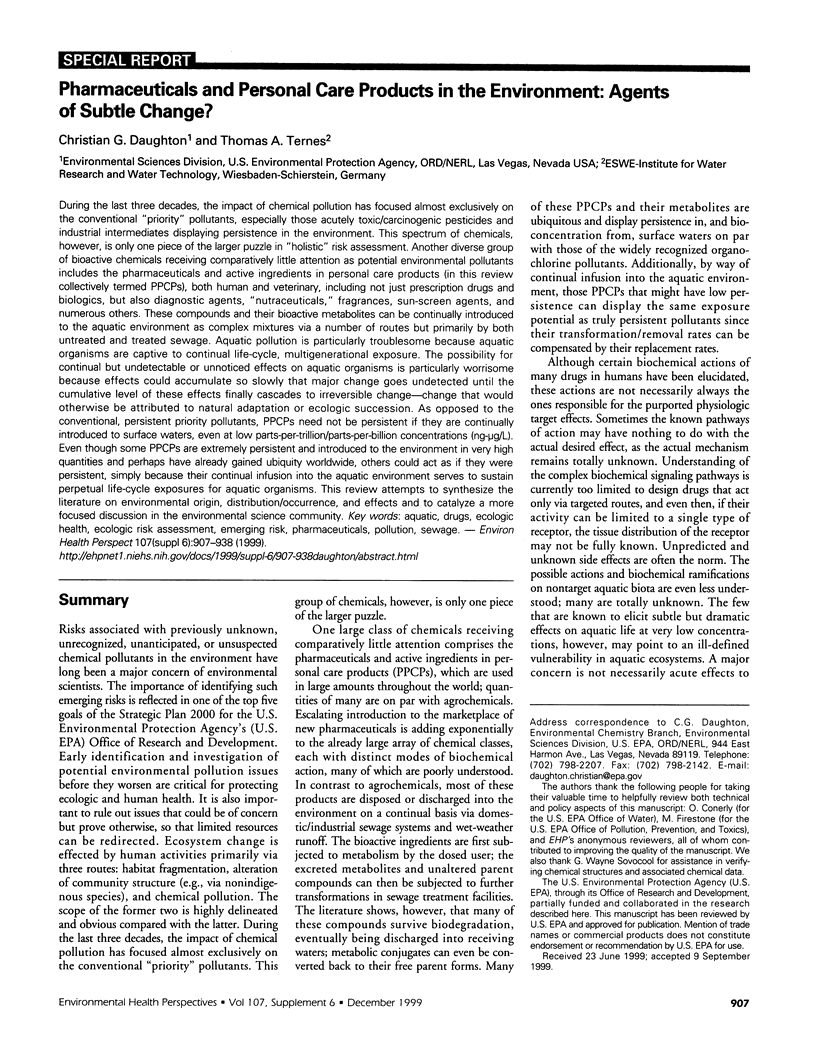

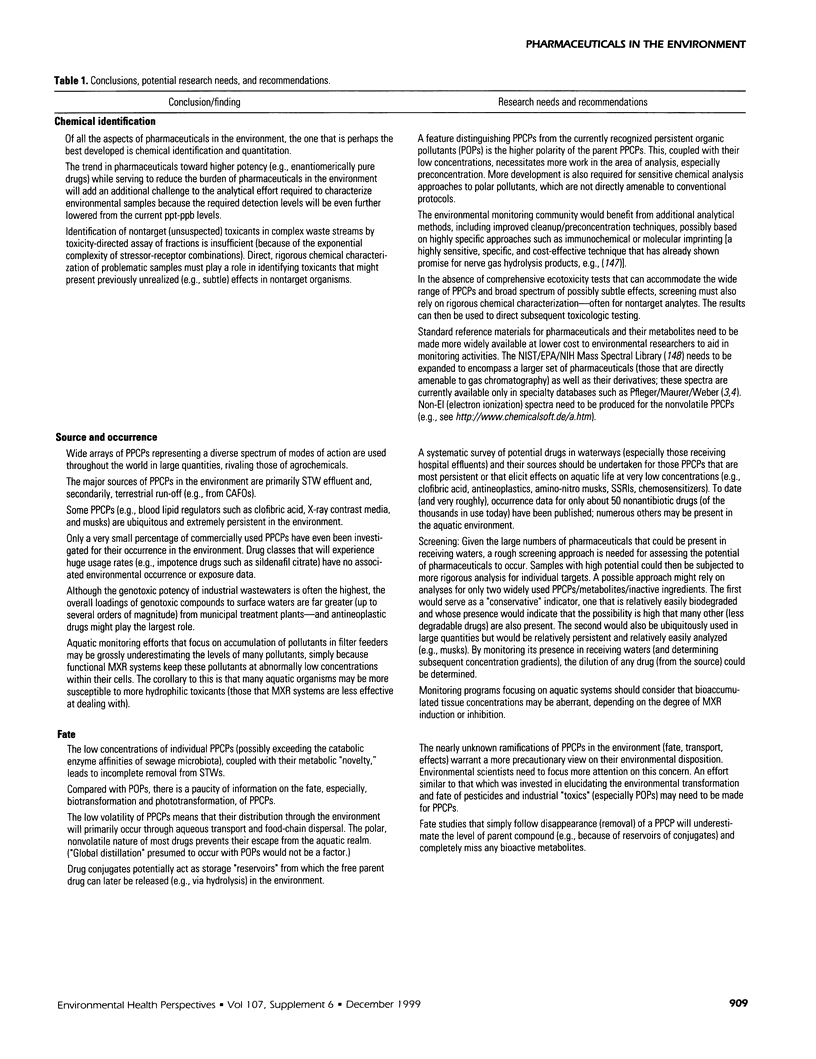
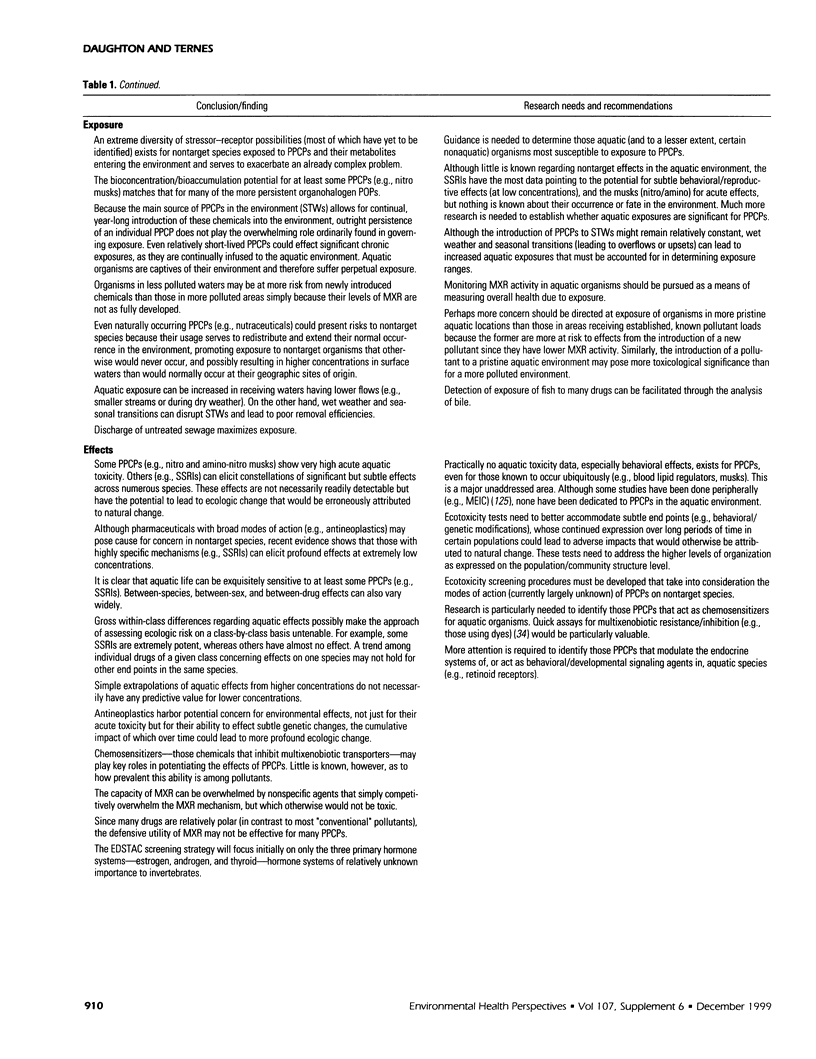
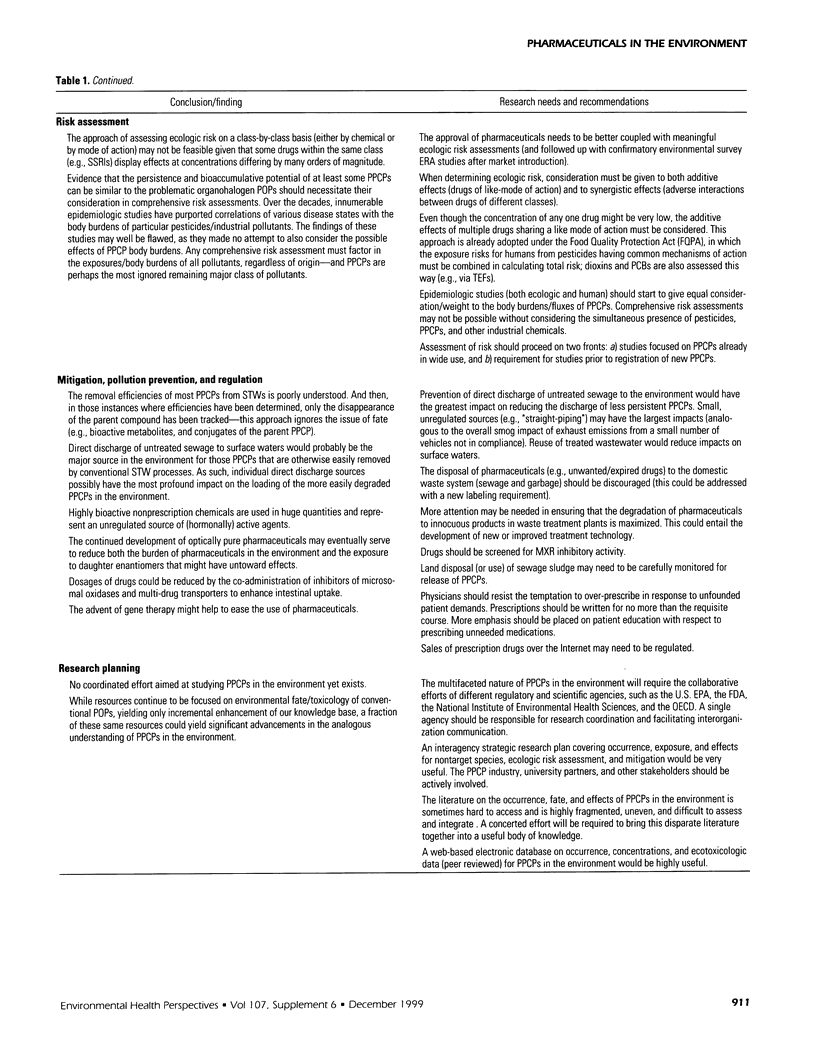
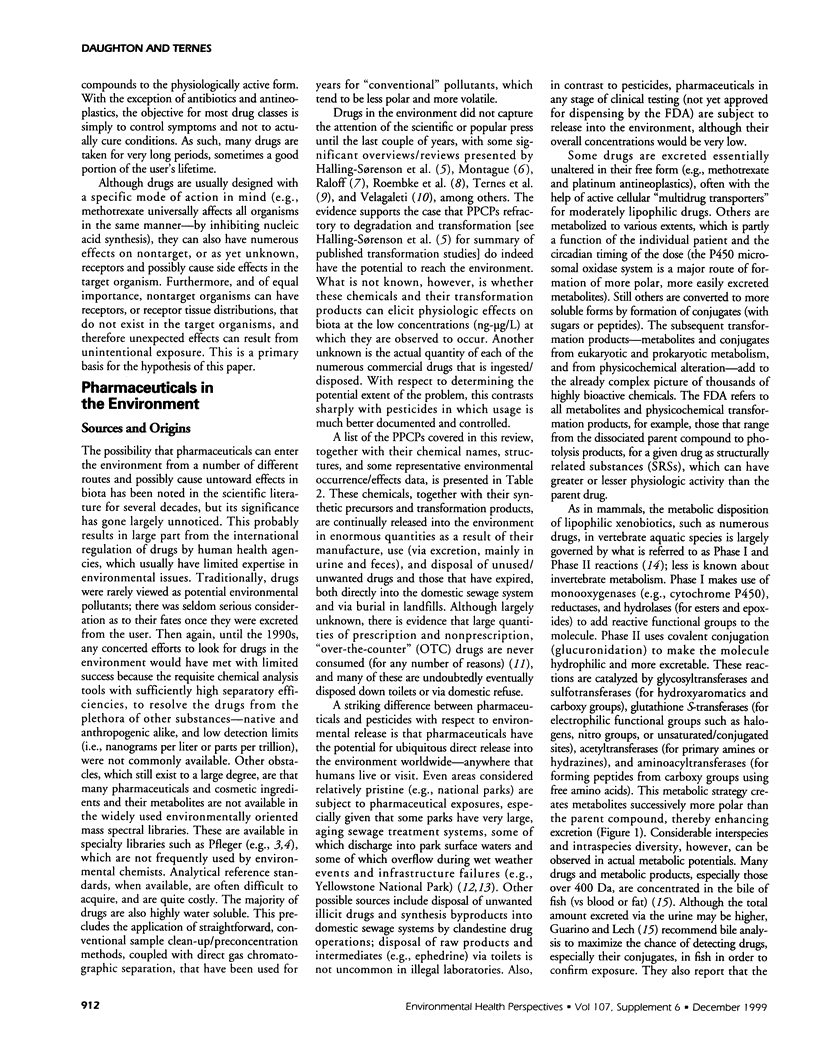
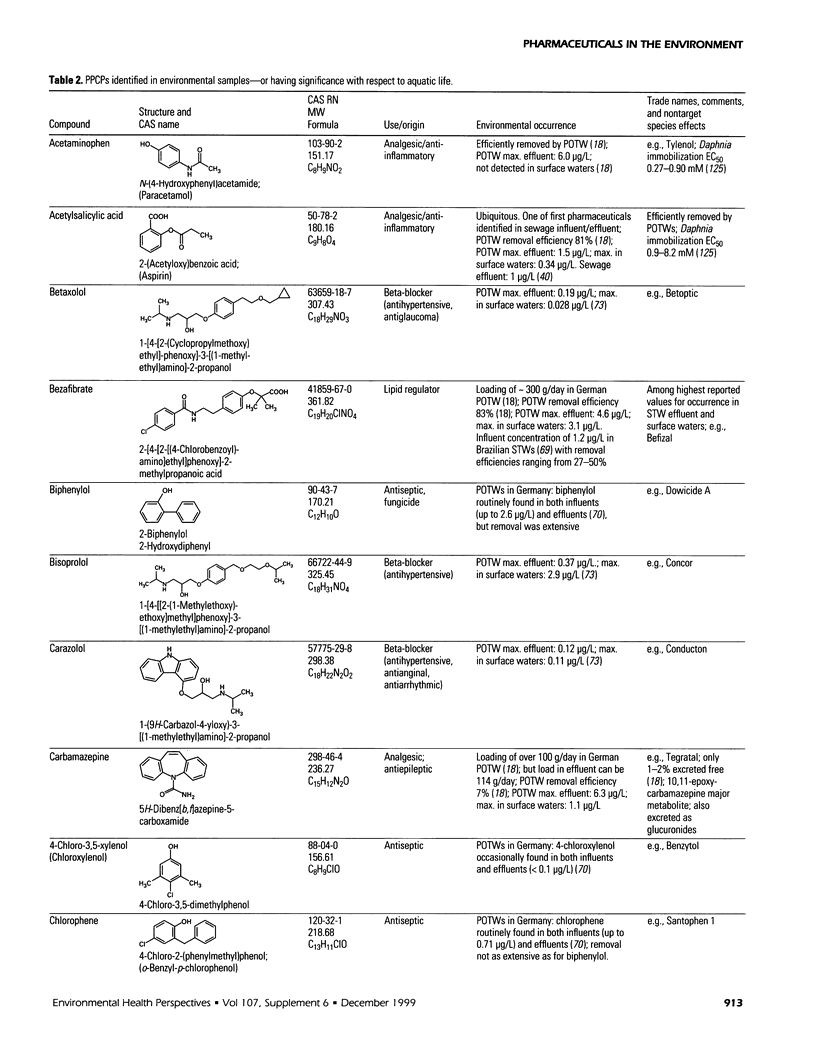
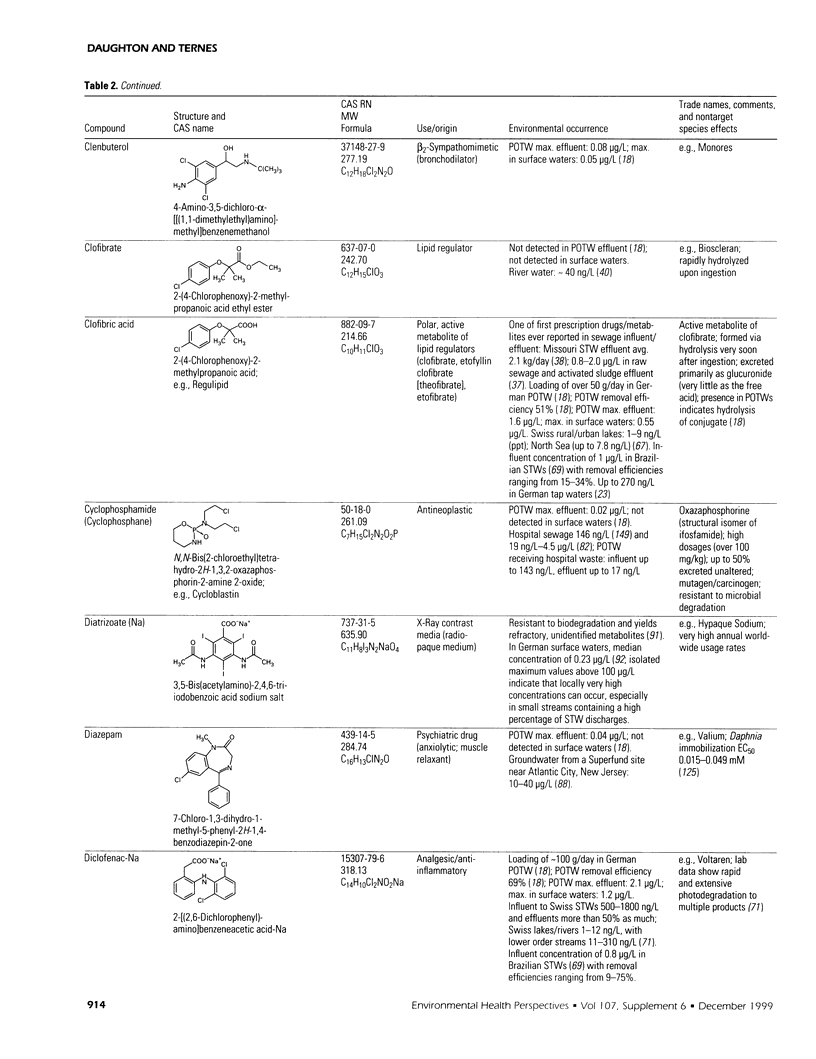
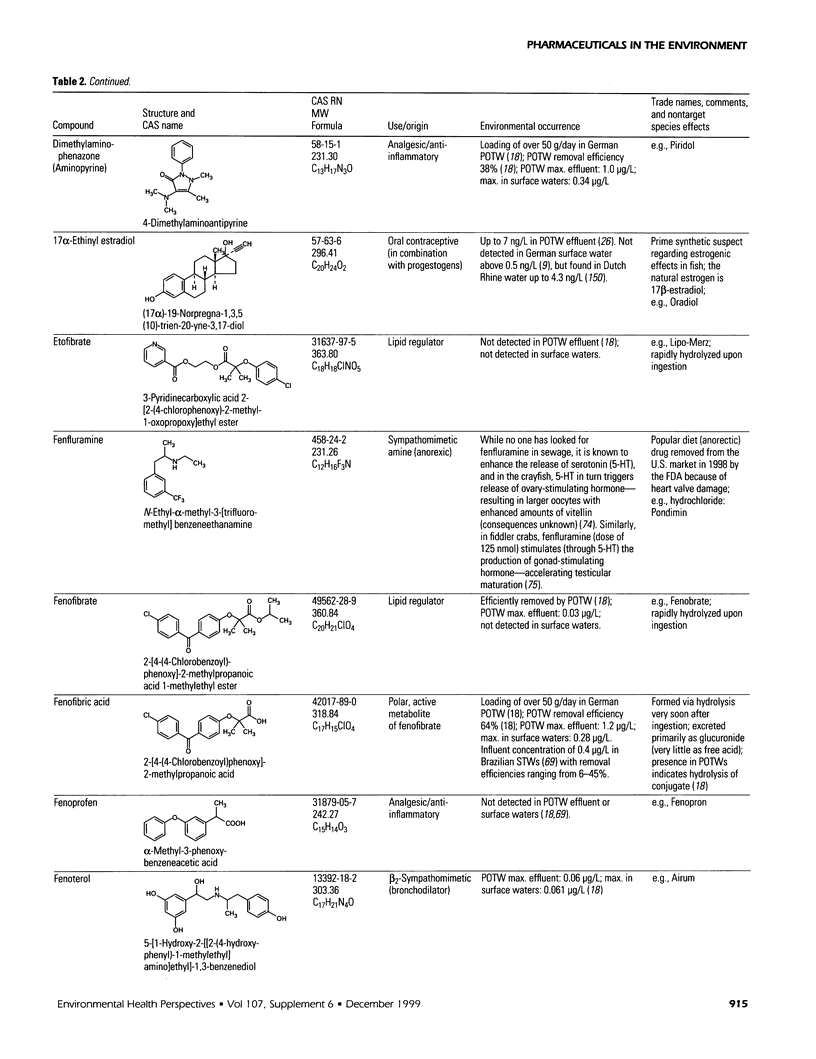
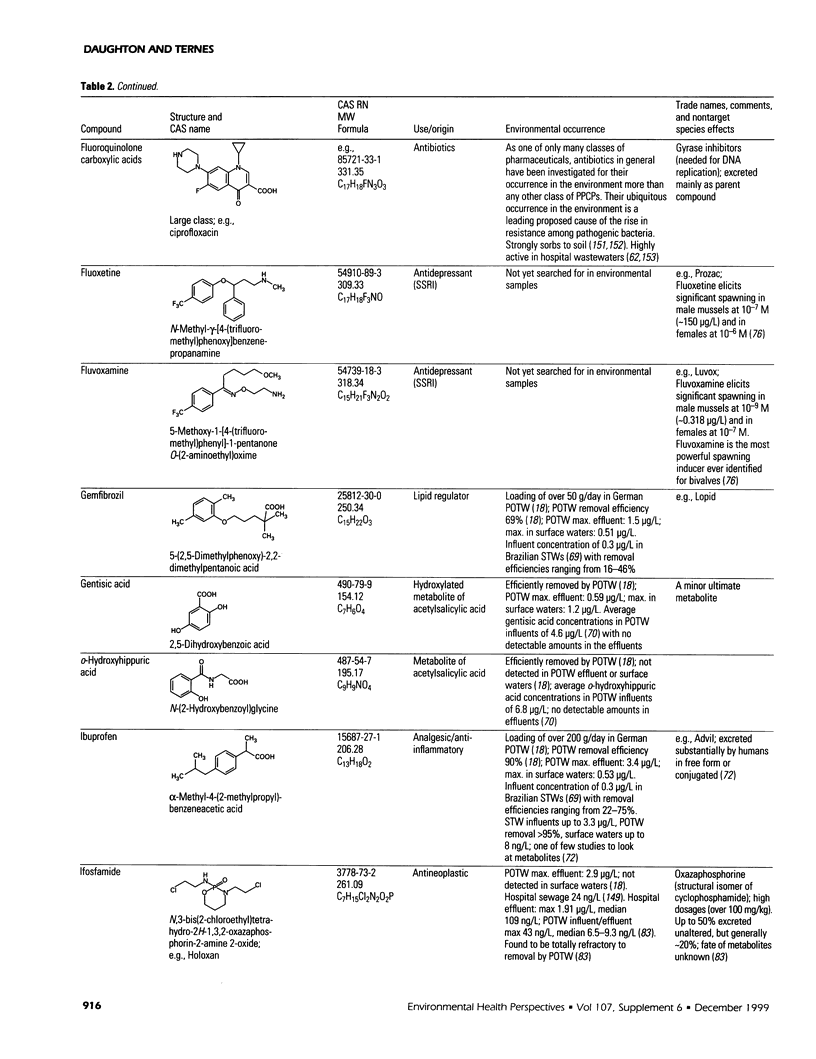
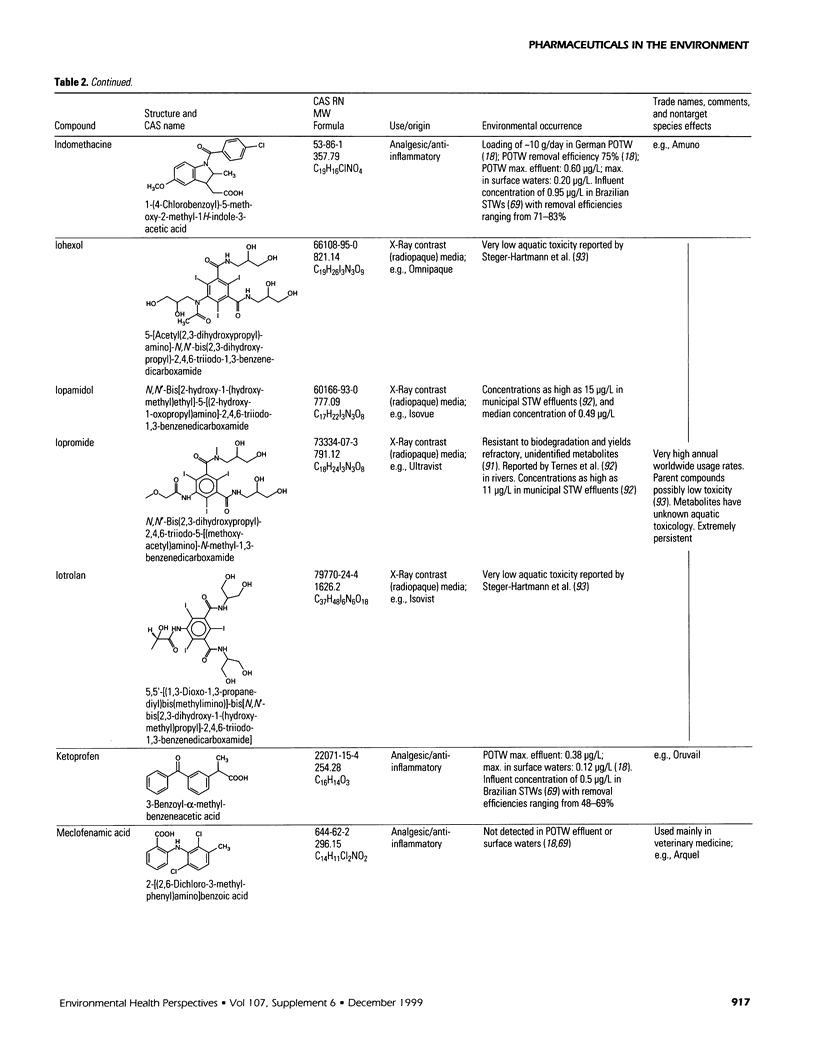
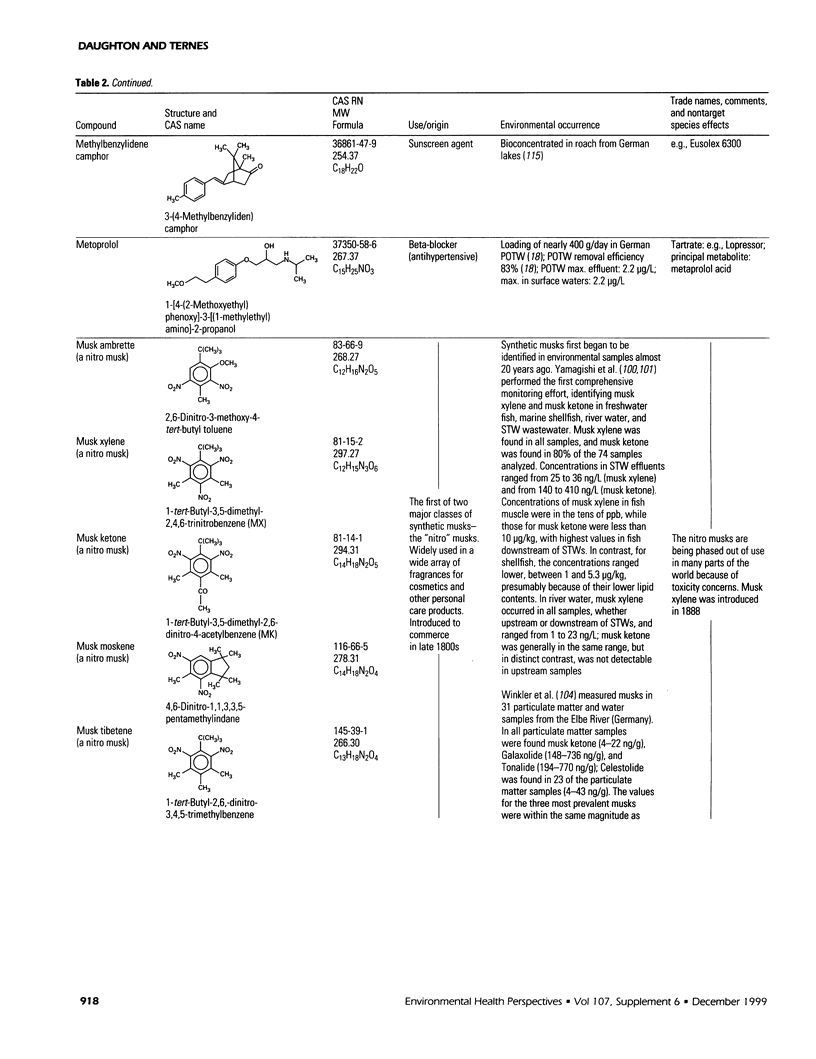
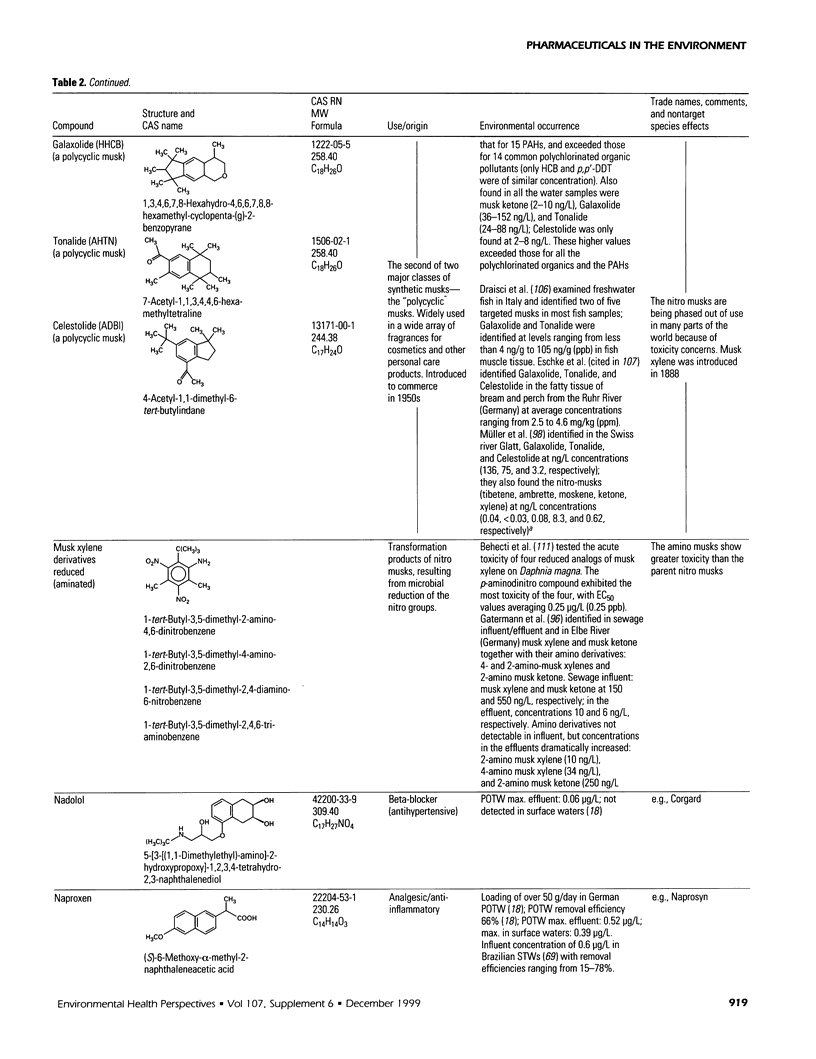
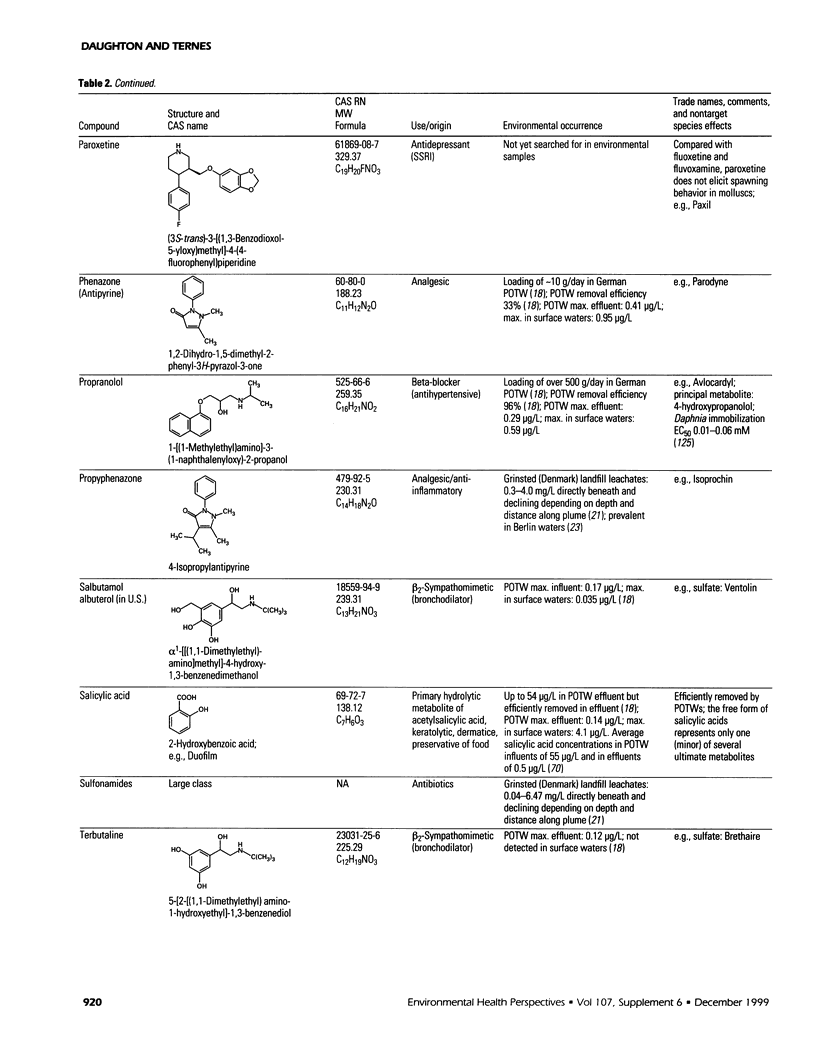
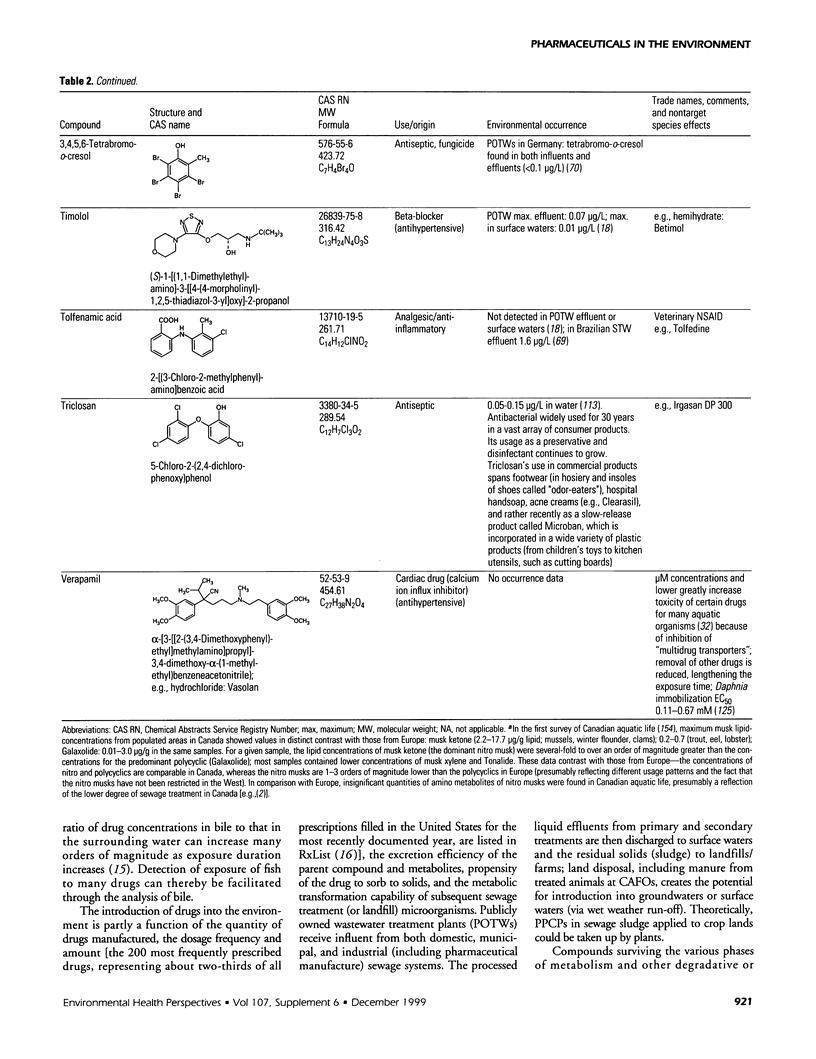
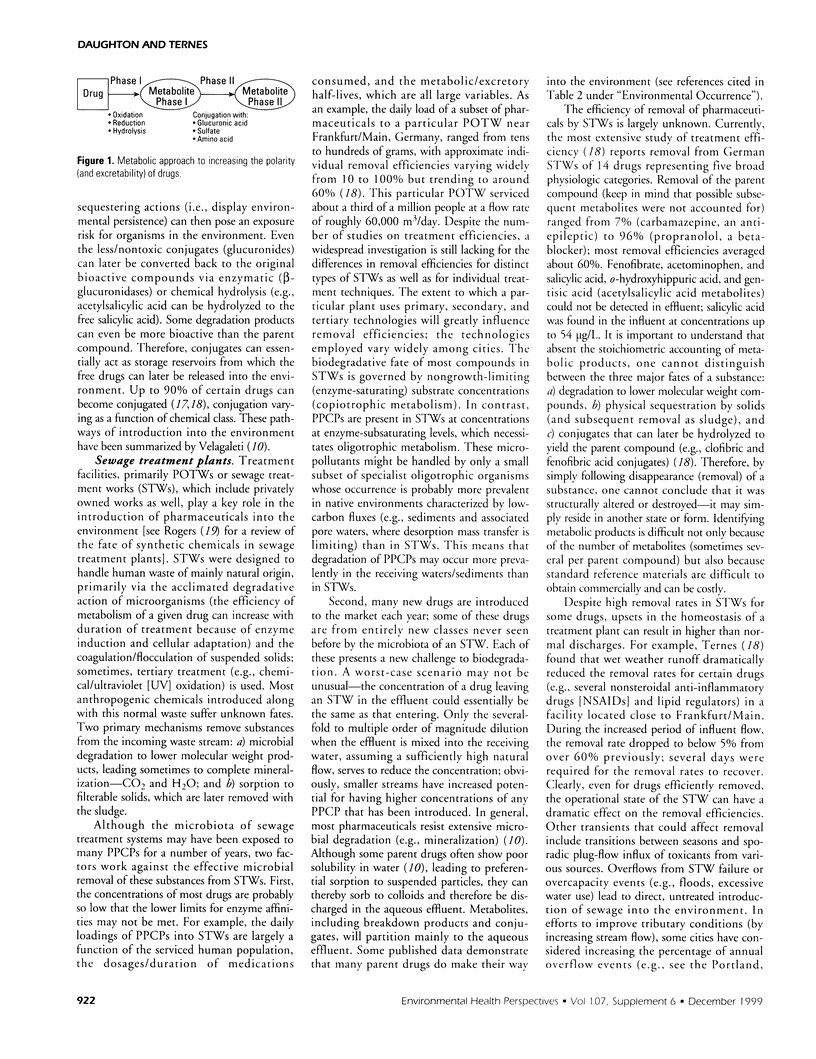
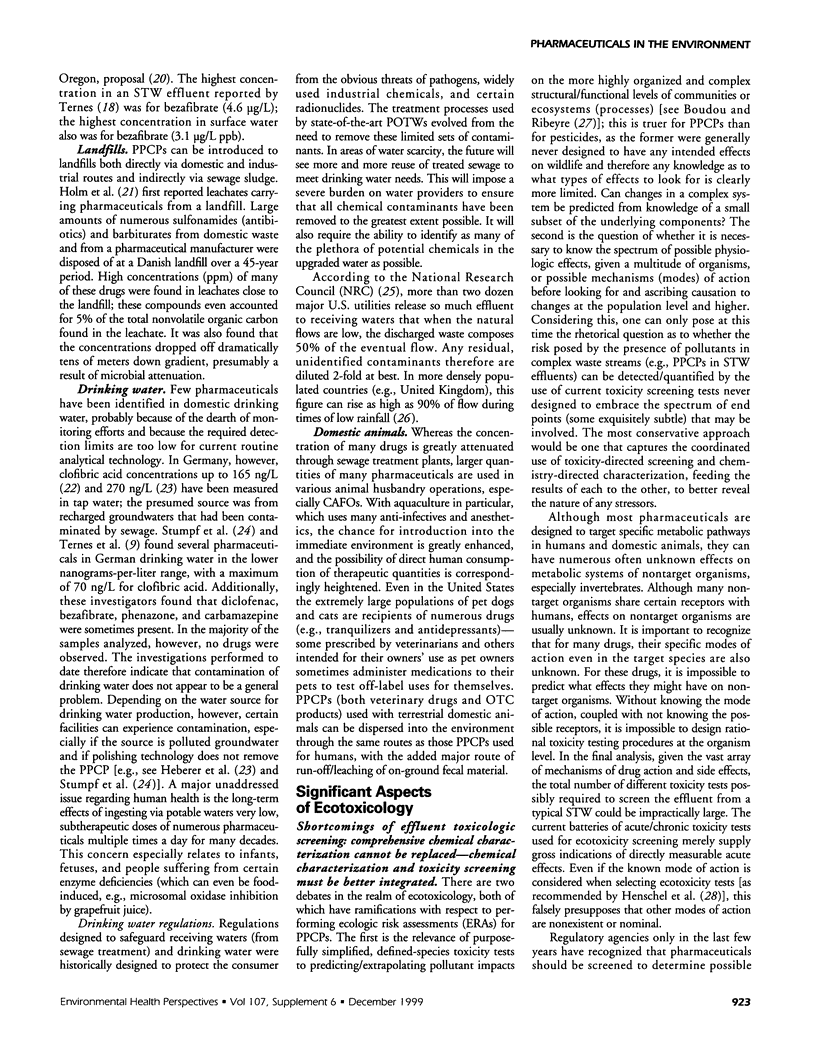
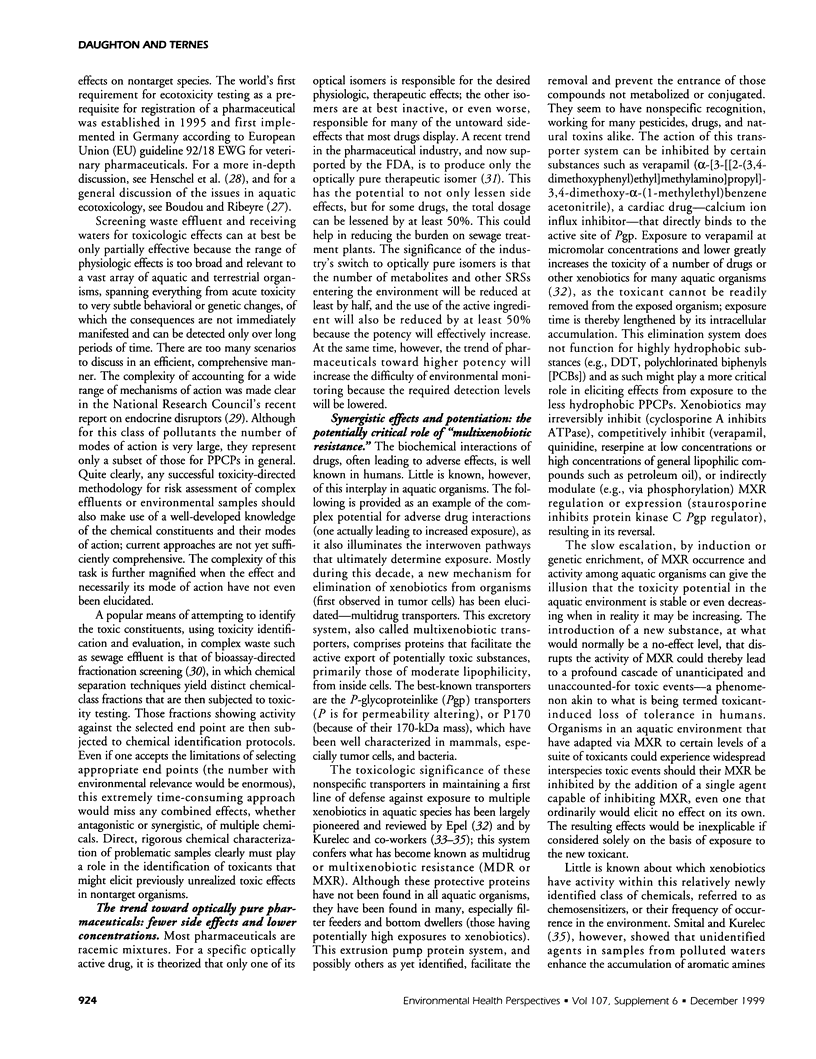
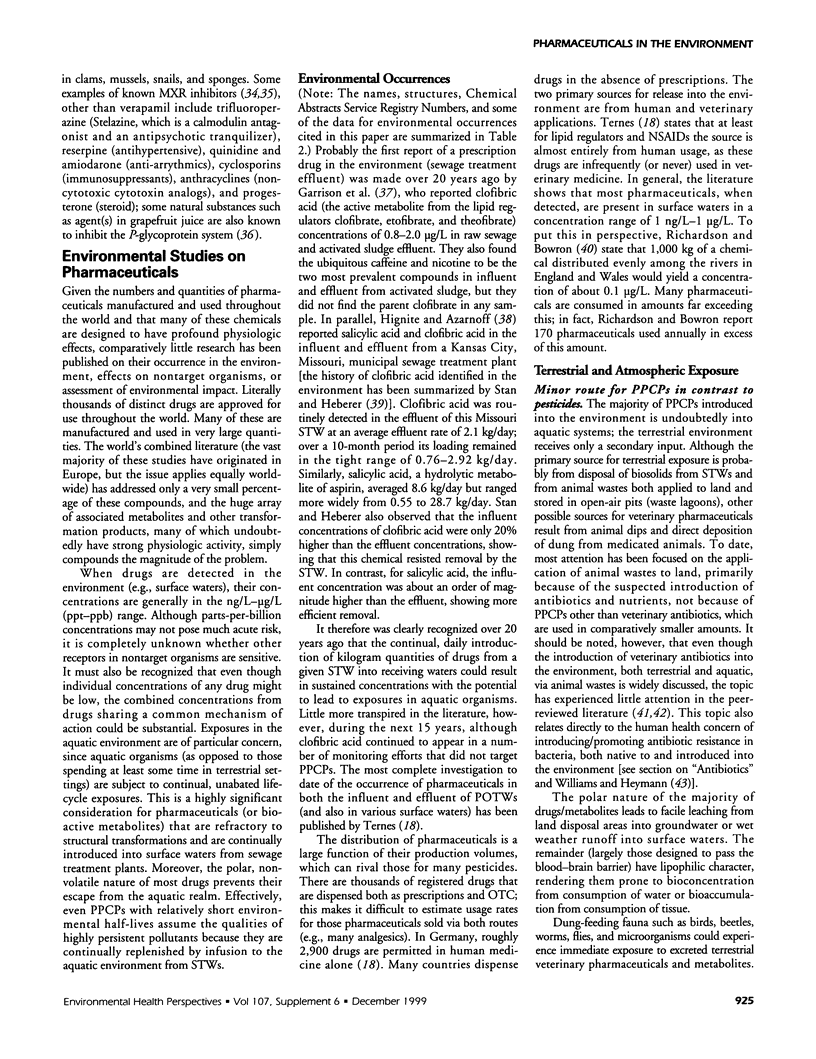
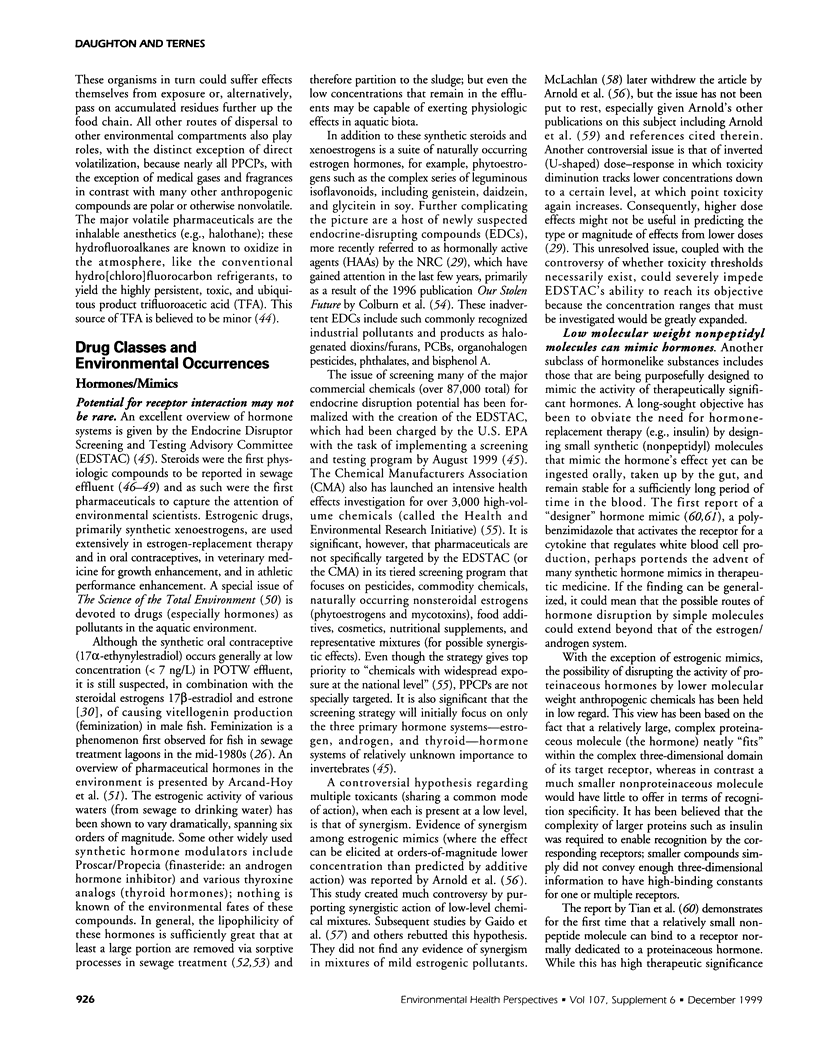
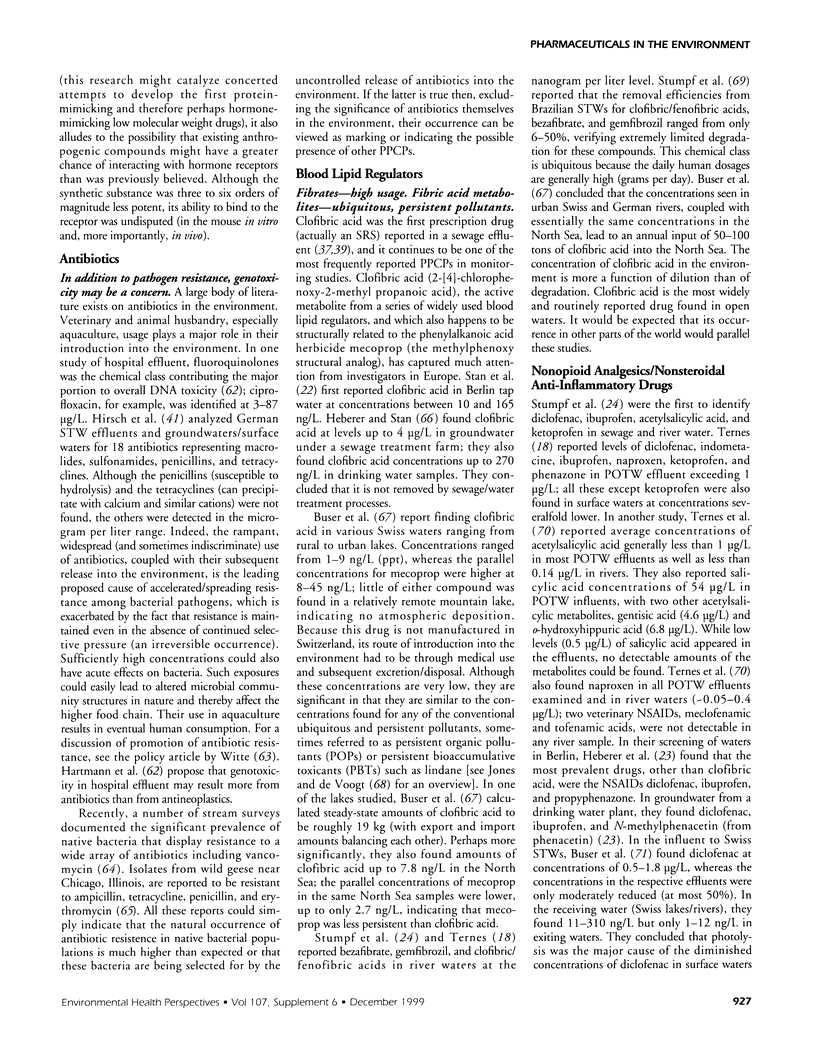
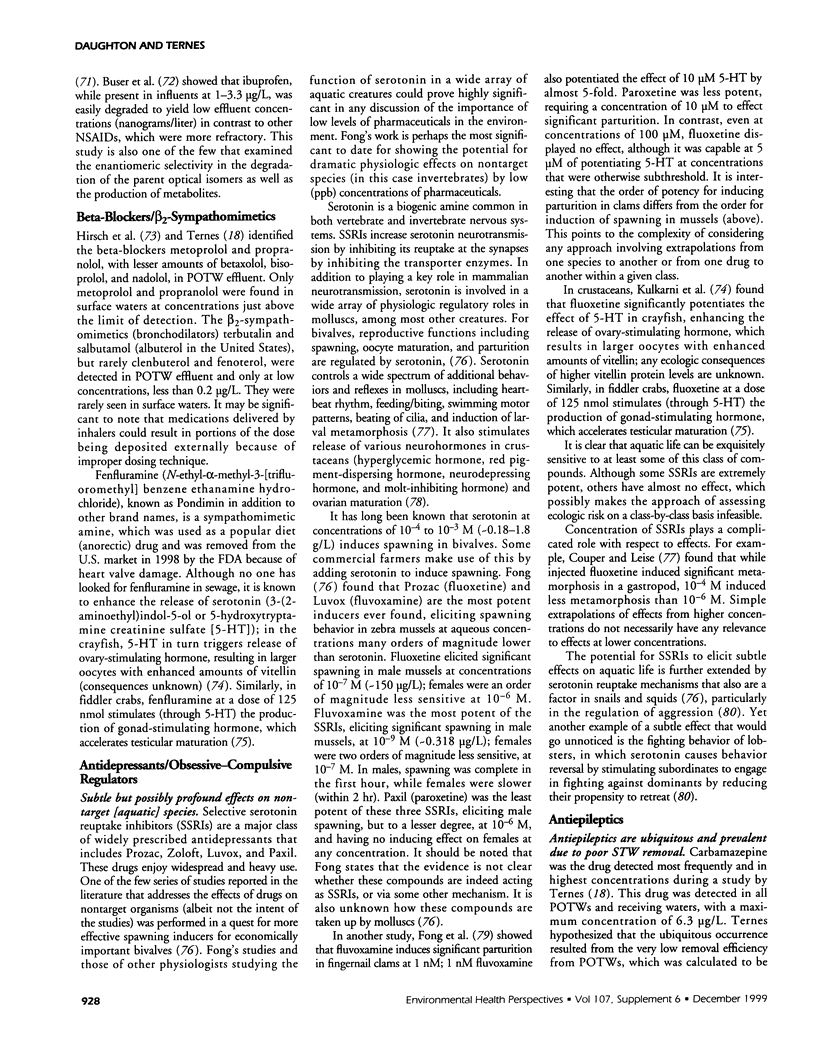
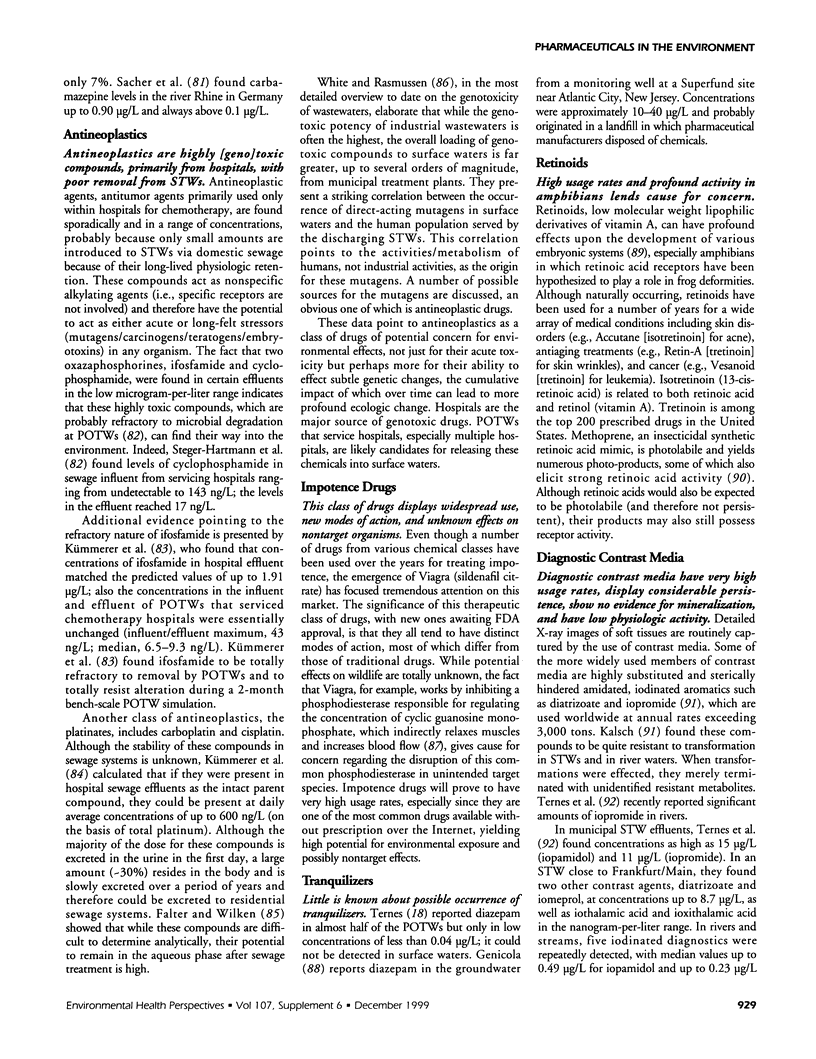
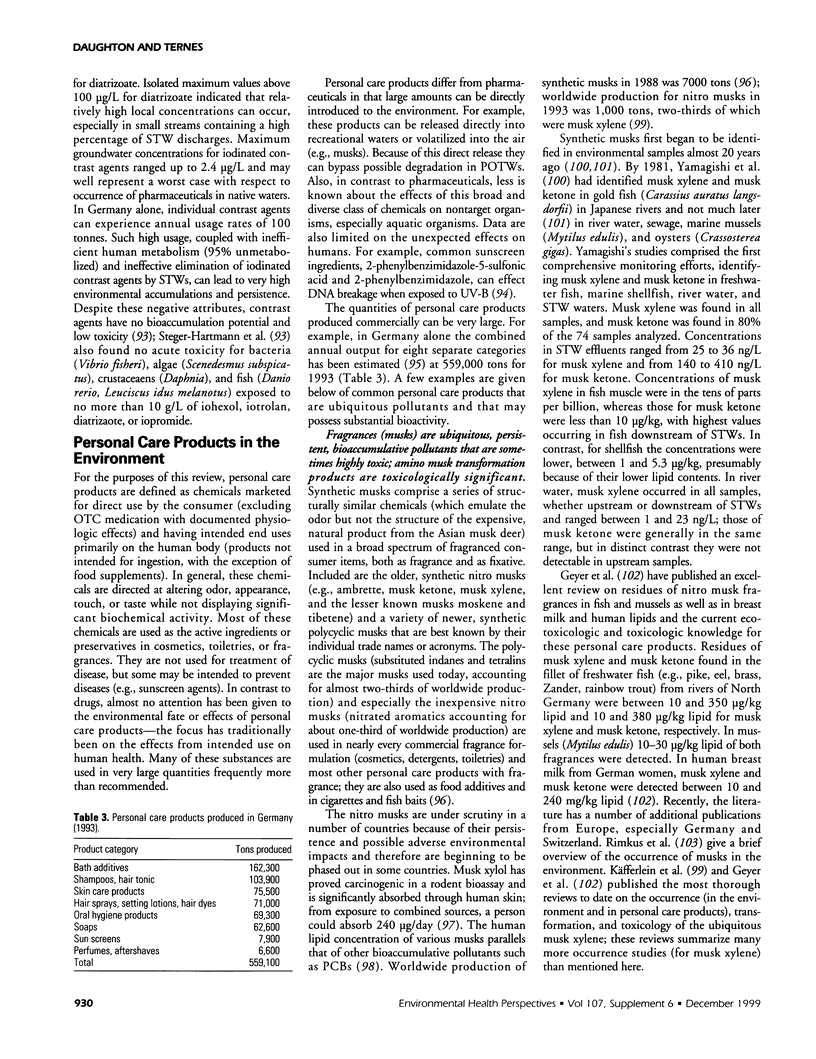
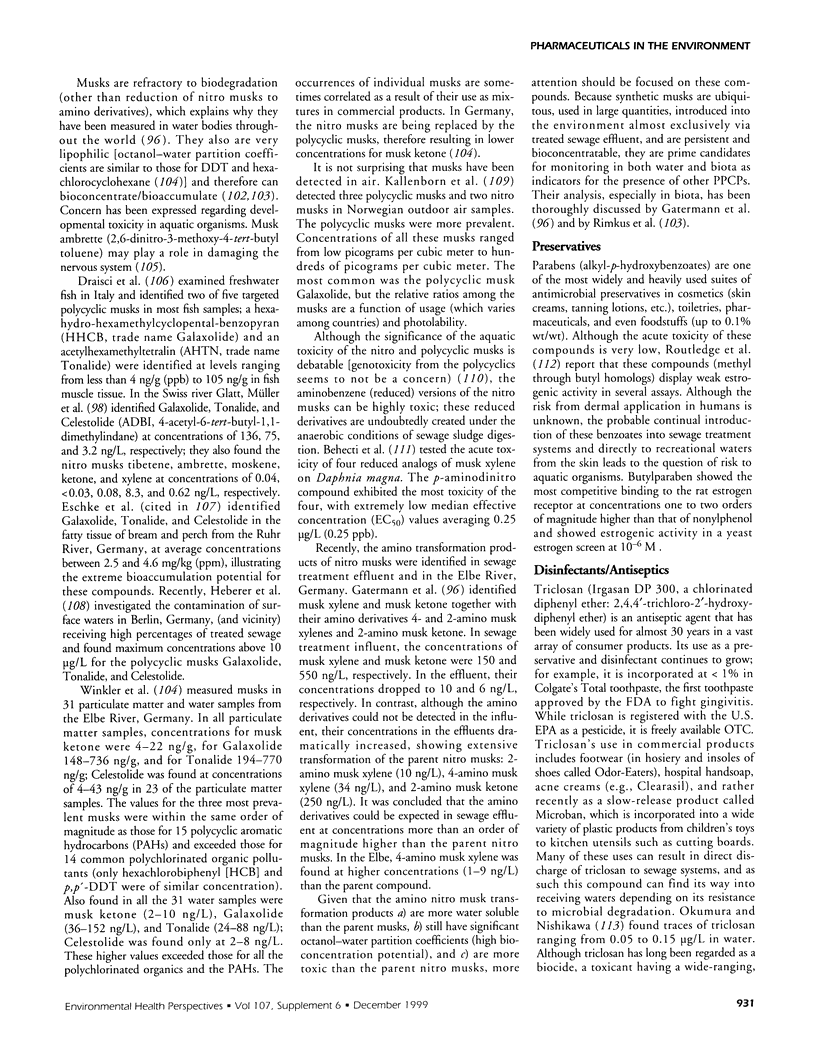
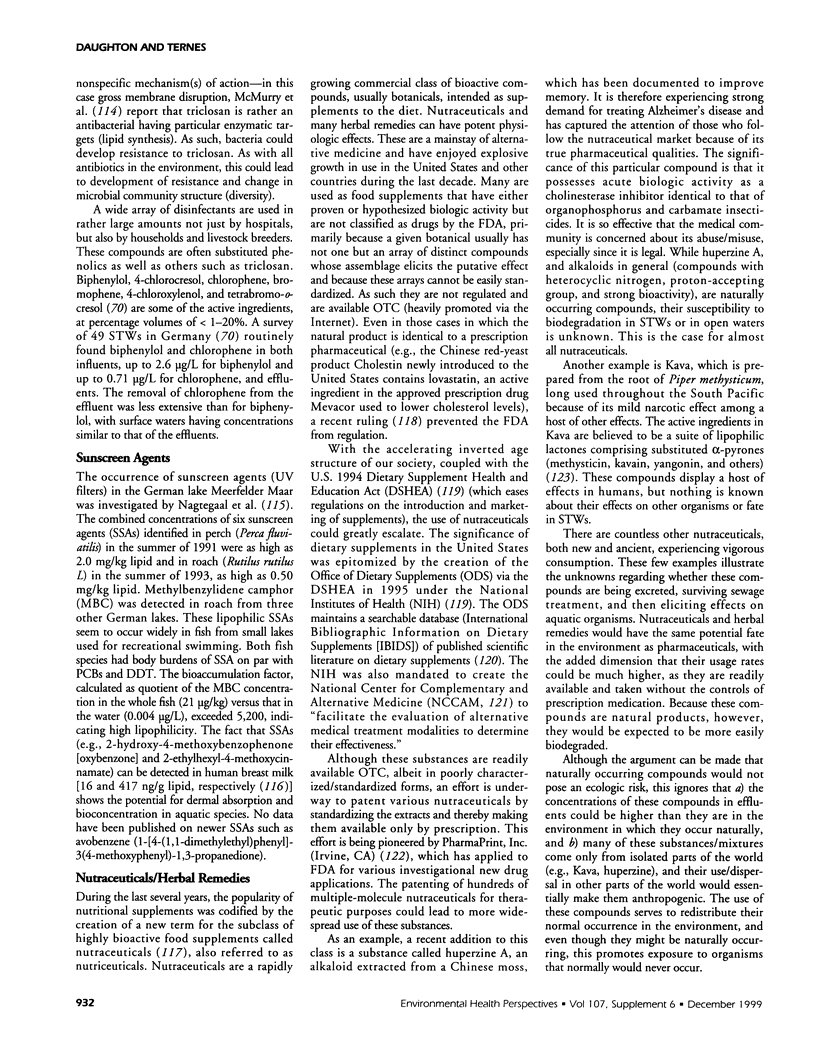
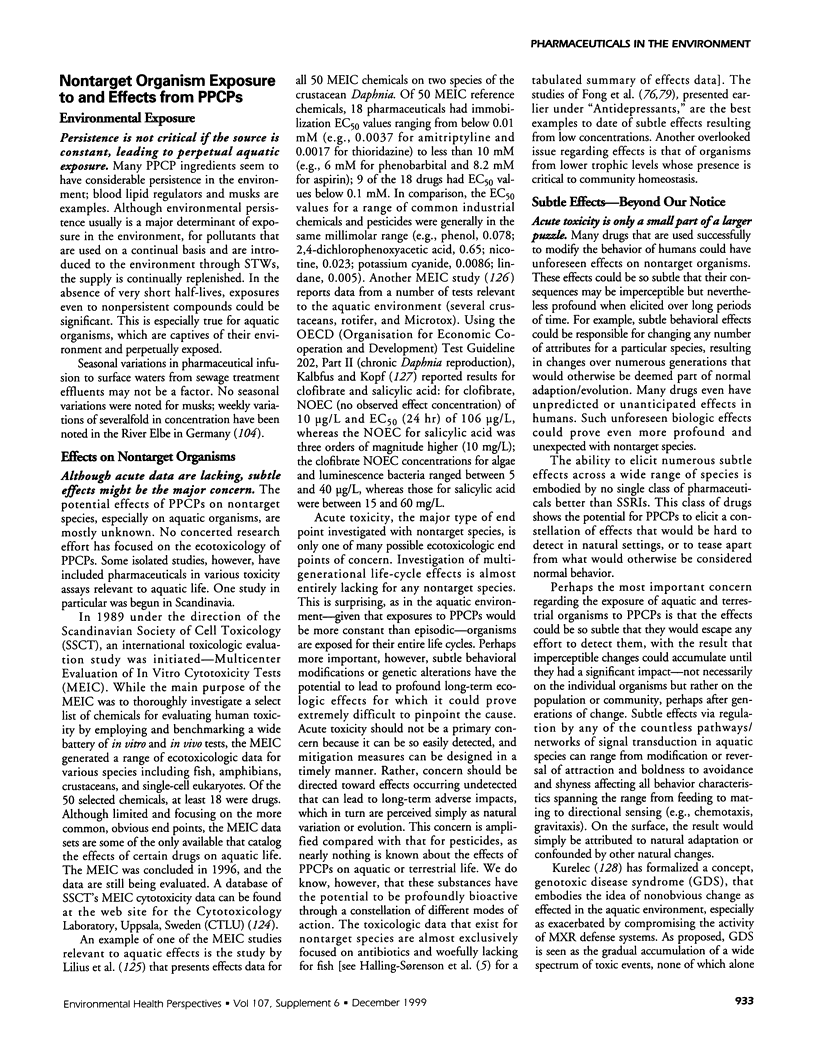
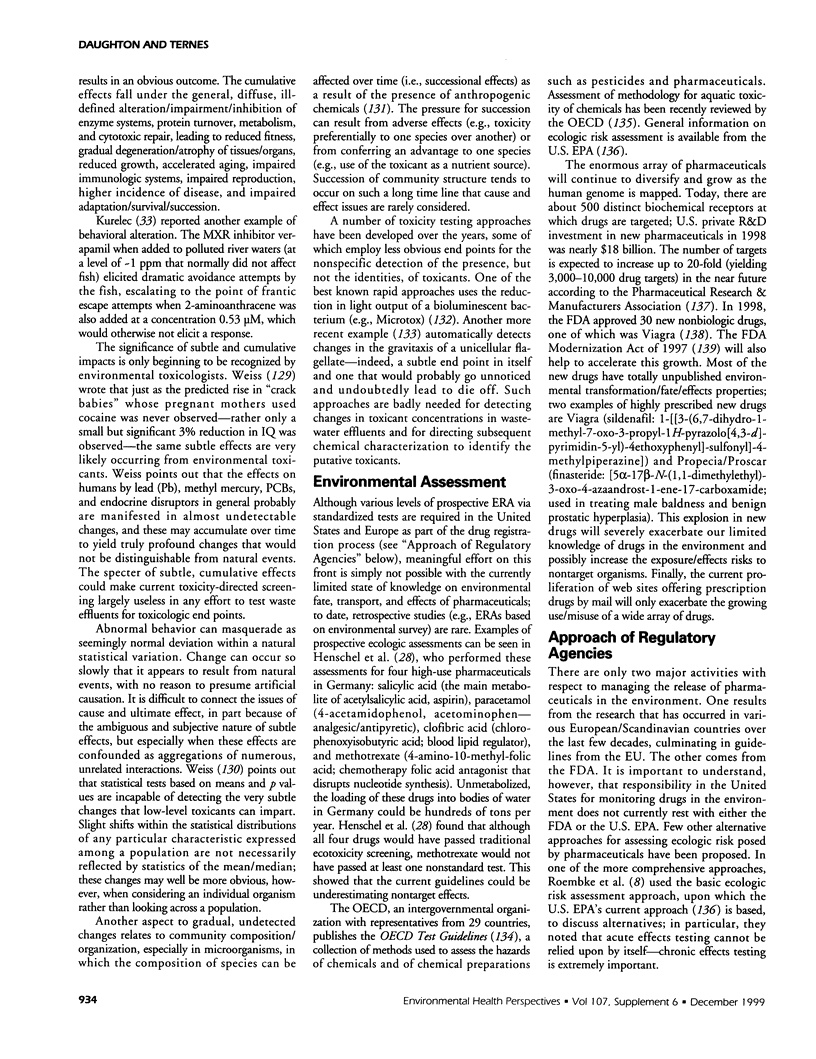
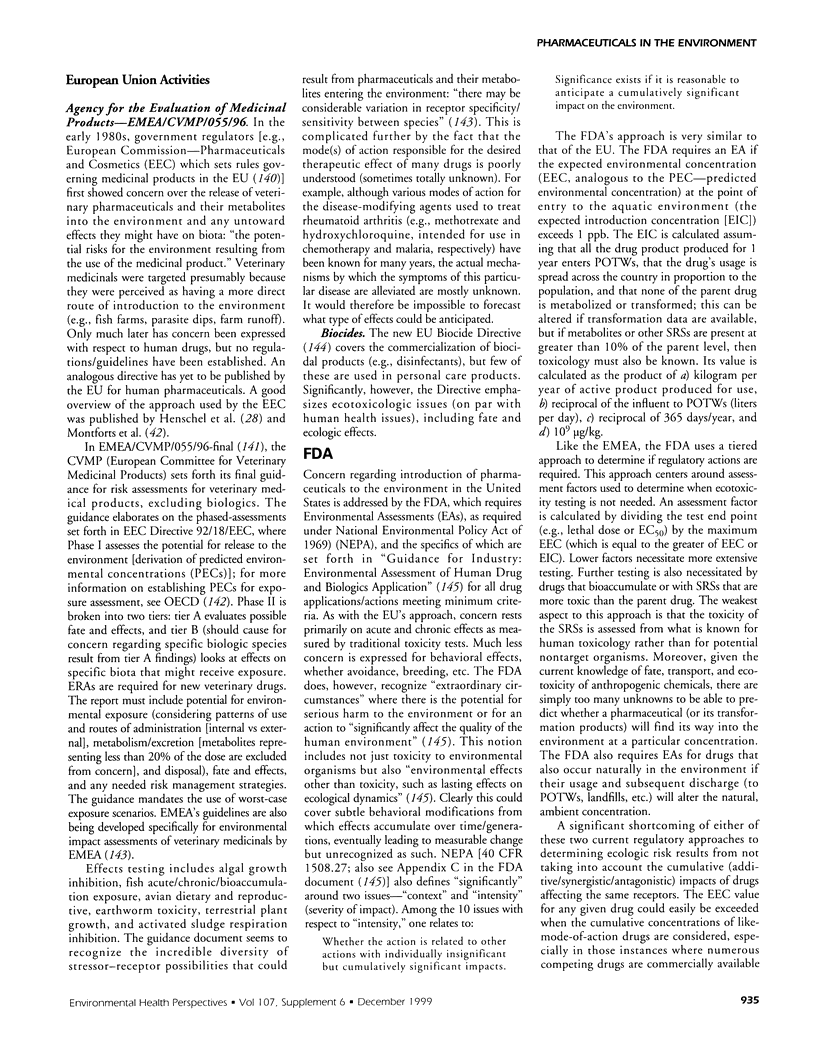
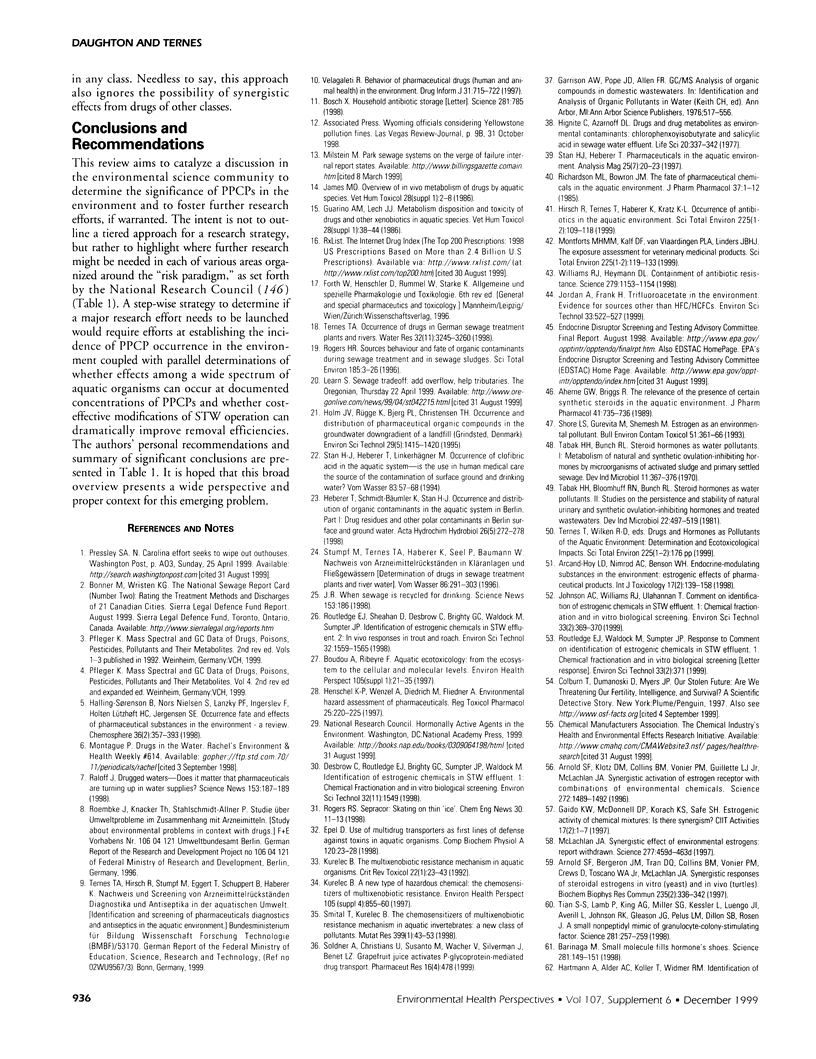
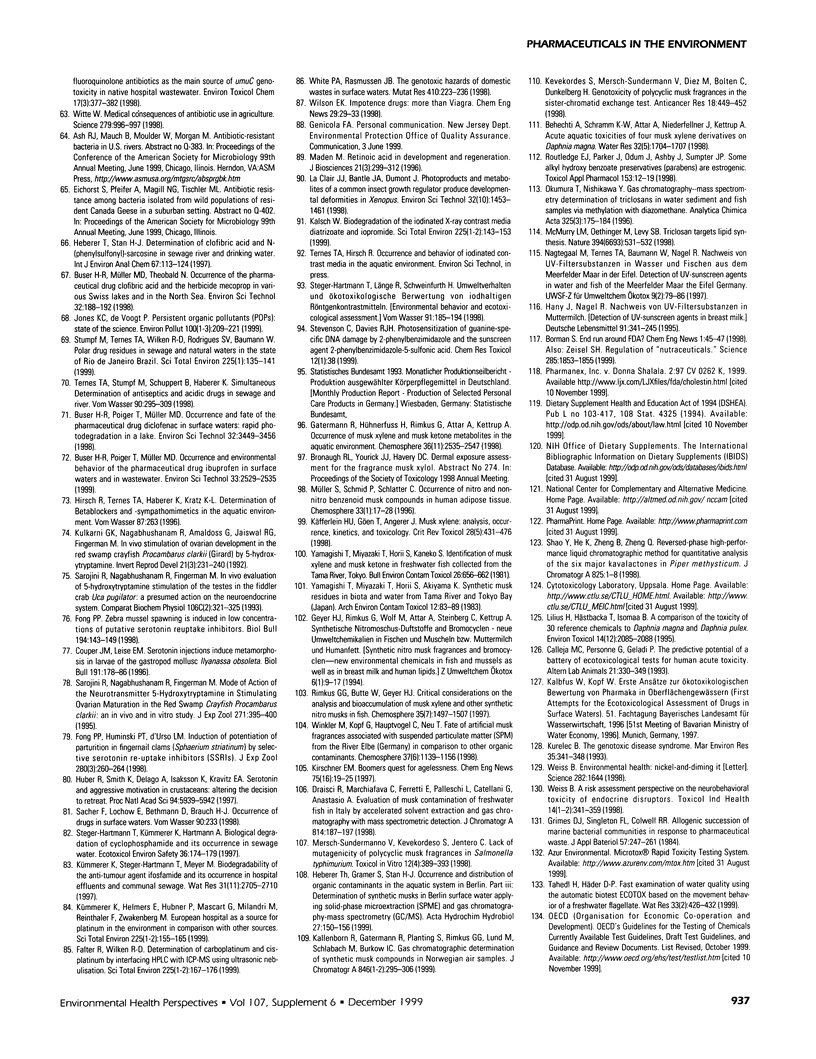
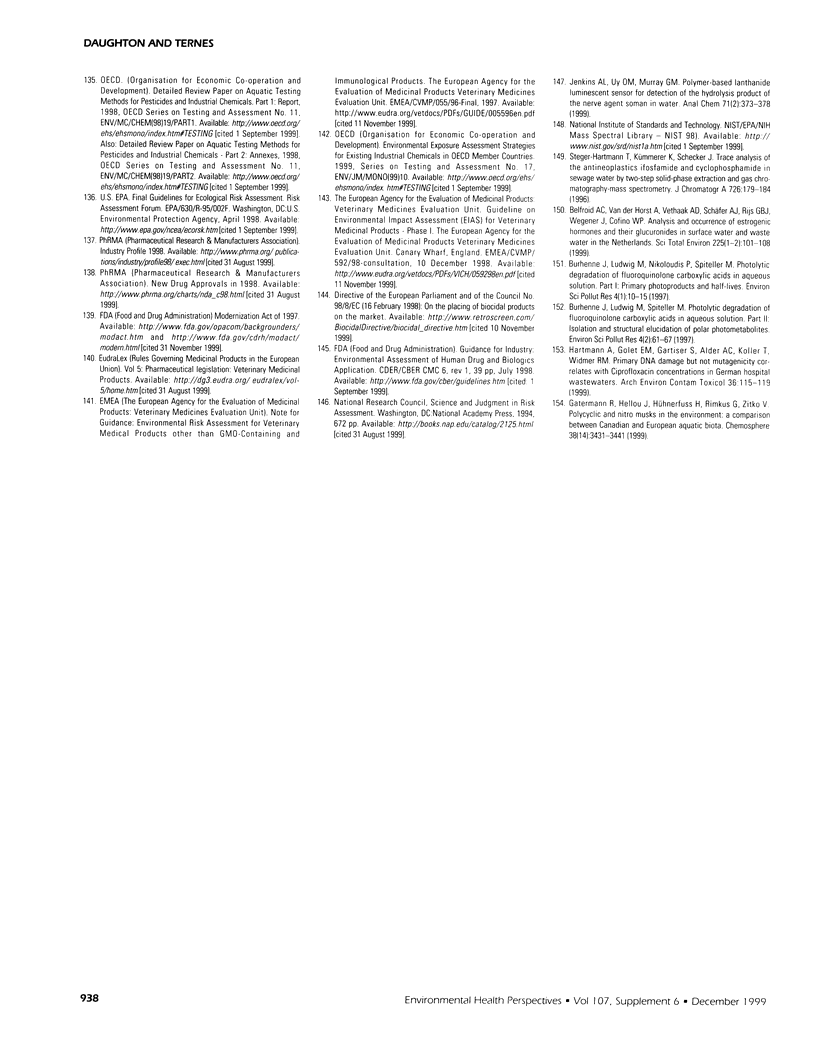
Selected References
These references are in PubMed. This may not be the complete list of references from this article.
- Aherne G. W., Briggs R. The relevance of the presence of certain synthetic steroids in the aquatic environment. J Pharm Pharmacol. 1989 Oct;41(10):735–736. doi: 10.1111/j.2042-7158.1989.tb06355.x. [DOI] [PubMed] [Google Scholar]
- Arnold S. F., Bergeron J. M., Tran D. Q., Collins B. M., Vonier P. M., Crews D., Toscano W. A., Jr, McLachlan J. A. Synergistic responses of steroidal estrogens in vitro (yeast) and in vivo (turtles). Biochem Biophys Res Commun. 1997 Jun 18;235(2):336–342. doi: 10.1006/bbrc.1997.6779. [DOI] [PubMed] [Google Scholar]
- Arnold S. F., Klotz D. M., Collins B. M., Vonier P. M., Guillette L. J., Jr, McLachlan J. A. Synergistic activation of estrogen receptor with combinations of environmental chemicals. Science. 1996 Jun 7;272(5267):1489–1492. doi: 10.1126/science.272.5267.1489. [DOI] [PubMed] [Google Scholar]
- Barinaga M. Small molecule fills hormone's shoes. Science. 1998 Jul 10;281(5374):149–151. doi: 10.1126/science.281.5374.149b. [DOI] [PubMed] [Google Scholar]
- Belfroid A. C., Van der Horst A., Vethaak A. D., Schäfer A. J., Rijs G. B., Wegener J., Cofino W. P. Analysis and occurrence of estrogenic hormones and their glucuronides in surface water and waste water in The Netherlands. Sci Total Environ. 1999 Jan 12;225(1-2):101–108. doi: 10.1016/s0048-9697(98)00336-2. [DOI] [PubMed] [Google Scholar]
- Bosch X. Household antibiotic shortage. Science. 1998 Aug 7;281(5378):785–785. doi: 10.1126/science.281.5378.783h. [DOI] [PubMed] [Google Scholar]
- Boudou A., Ribeyre F. Aquatic ecotoxicology: from the ecosystem to the cellular and molecular levels. Environ Health Perspect. 1997 Feb;105 (Suppl 1):21–35. doi: 10.1289/ehp.97105s121. [DOI] [PMC free article] [PubMed] [Google Scholar]
- Draisci R., Marchiafava C., Ferretti E., Palleschi L., Catellani G., Anastasio A. Evaluation of musk contamination of freshwater fish in Italy by accelerated solvent extraction and gas chromatography with mass spectrometric detection. J Chromatogr A. 1998 Jul 24;814(1-2):187–197. doi: 10.1016/s0021-9673(98)00396-3. [DOI] [PubMed] [Google Scholar]
- Falter R., Wilken R. D. Determination of carboplatinum and cisplatinum by interfacing HPLC with ICP-MS using ultrasonic nebulisation. Sci Total Environ. 1999 Jan 12;225(1-2):167–176. doi: 10.1016/s0048-9697(98)00342-8. [DOI] [PubMed] [Google Scholar]
- Fong P. P., Huminski P. T., D'Urso L. M. Induction and potentiation of parturition in fingernail clams (Sphaerium striatinum) by selective serotonin re-uptake inhibitors (SSRIs). J Exp Zool. 1998 Feb 15;280(3):260–264. doi: 10.1002/(sici)1097-010x(19980215)280:3<260::aid-jez7>3.0.co;2-l. [DOI] [PubMed] [Google Scholar]
- Grimes D. J., Singleton F. L., Colwell R. R. Allogenic succession of marine bacterial communities in response to pharmaceutical waste. J Appl Bacteriol. 1984 Oct;57(2):247–261. doi: 10.1111/j.1365-2672.1984.tb01389.x. [DOI] [PubMed] [Google Scholar]
- Guarino A. M., Lech J. J. Metabolism, disposition, and toxicity of drugs and other xenobiotics in aquatic species. Vet Hum Toxicol. 1986;28 (Suppl 1):38–44. [PubMed] [Google Scholar]
- Halling-Sørensen B., Nors Nielsen S., Lanzky P. F., Ingerslev F., Holten Lützhøft H. C., Jørgensen S. E. Occurrence, fate and effects of pharmaceutical substances in the environment--a review. Chemosphere. 1998 Jan;36(2):357–393. doi: 10.1016/s0045-6535(97)00354-8. [DOI] [PubMed] [Google Scholar]
- Henschel K. P., Wenzel A., Diedrich M., Fliedner A. Environmental hazard assessment of pharmaceuticals. Regul Toxicol Pharmacol. 1997 Jun;25(3):220–225. doi: 10.1006/rtph.1997.1102. [DOI] [PubMed] [Google Scholar]
- Hignite C., Azarnoff D. L. Drugs and drug metabolites as environmental contaminants: chlorophenoxyisobutyrate and salicyclic acid in sewage water effluent. Life Sci. 1977 Jan 15;20(2):337–341. doi: 10.1016/0024-3205(77)90329-0. [DOI] [PubMed] [Google Scholar]
- Hirsch R., Ternes T., Haberer K., Kratz K. L. Occurrence of antibiotics in the aquatic environment. Sci Total Environ. 1999 Jan 12;225(1-2):109–118. doi: 10.1016/s0048-9697(98)00337-4. [DOI] [PubMed] [Google Scholar]
- Huber R., Smith K., Delago A., Isaksson K., Kravitz E. A. Serotonin and aggressive motivation in crustaceans: altering the decision to retreat. Proc Natl Acad Sci U S A. 1997 May 27;94(11):5939–5942. doi: 10.1073/pnas.94.11.5939. [DOI] [PMC free article] [PubMed] [Google Scholar]
- James M. O. Overview of in vitro metabolism of drugs by aquatic species. Vet Hum Toxicol. 1986;28 (Suppl 1):2–8. [PubMed] [Google Scholar]
- Jenkins A. L., Uy O. M., Murray G. M. Polymer-based lanthanide luminescent sensor for detection of the hydrolysis product of the nerve agent Soman in water. Anal Chem. 1999 Jan 15;71(2):373–378. doi: 10.1021/ac980985r. [DOI] [PubMed] [Google Scholar]
- Jones K. C., de Voogt P. Persistent organic pollutants (POPs): state of the science. Environ Pollut. 1999;100(1-3):209–221. doi: 10.1016/s0269-7491(99)00098-6. [DOI] [PubMed] [Google Scholar]
- Kalsch W. Biodegradation of the iodinated X-ray contrast media diatrizoate and iopromide. Sci Total Environ. 1999 Jan 12;225(1-2):143–153. doi: 10.1016/s0048-9697(98)00340-4. [DOI] [PubMed] [Google Scholar]
- Kevekordes S., Mersch-Sundermann V., Diez M., Bolten C., Dunkelberg H. Genotoxicity of polycyclic musk fragrances in the sister-chromatid exchange test. Anticancer Res. 1998 Jan-Feb;18(1A):449–452. [PubMed] [Google Scholar]
- Kurelec B. A new type of hazardous chemical: the chemosensitizers of multixenobiotic resistance. Environ Health Perspect. 1997 Jun;105 (Suppl 4):855–860. doi: 10.1289/ehp.97105s4855. [DOI] [PMC free article] [PubMed] [Google Scholar]
- Kurelec B. The multixenobiotic resistance mechanism in aquatic organisms. Crit Rev Toxicol. 1992;22(1):23–43. doi: 10.3109/10408449209145320. [DOI] [PubMed] [Google Scholar]
- Käfferlein H. U., Göen T., Angerer J. Musk xylene: analysis, occurrence, kinetics, and toxicology. Crit Rev Toxicol. 1998 Sep;28(5):431–476. doi: 10.1080/10408449891344245. [DOI] [PubMed] [Google Scholar]
- Kümmerer K., Helmers E., Hubner P., Mascart G., Milandri M., Reinthaler F., Zwakenberg M. European hospitals as a source for platinum in the environment in comparison with other sources. Sci Total Environ. 1999 Jan 12;225(1-2):155–165. doi: 10.1016/s0048-9697(98)00341-6. [DOI] [PubMed] [Google Scholar]
- McMurry L. M., Oethinger M., Levy S. B. Triclosan targets lipid synthesis. Nature. 1998 Aug 6;394(6693):531–532. doi: 10.1038/28970. [DOI] [PubMed] [Google Scholar]
- Montforts M. H., Kalf D. F., van Vlaardingen P. L., Linders J. B. The exposure assessment for veterinary medicinal products. Sci Total Environ. 1999 Jan 12;225(1-2):119–133. doi: 10.1016/s0048-9697(98)00338-6. [DOI] [PubMed] [Google Scholar]
- Müller S., Schmid P., Schlatter C. Occurrence of nitro and non-nitro benzenoid musk compounds in human adipose tissue. Chemosphere. 1996 Jul;33(1):17–28. doi: 10.1016/0045-6535(96)00160-9. [DOI] [PubMed] [Google Scholar]
- Richardson M. L., Bowron J. M. The fate of pharmaceutical chemicals in the aquatic environment. J Pharm Pharmacol. 1985 Jan;37(1):1–12. doi: 10.1111/j.2042-7158.1985.tb04922.x. [DOI] [PubMed] [Google Scholar]
- Rogers H. R. Sources, behaviour and fate of organic contaminants during sewage treatment and in sewage sludges. Sci Total Environ. 1996 Jun 21;185(1-3):3–26. doi: 10.1016/0048-9697(96)05039-5. [DOI] [PubMed] [Google Scholar]
- Routledge E. J., Parker J., Odum J., Ashby J., Sumpter J. P. Some alkyl hydroxy benzoate preservatives (parabens) are estrogenic. Toxicol Appl Pharmacol. 1998 Nov;153(1):12–19. doi: 10.1006/taap.1998.8544. [DOI] [PubMed] [Google Scholar]
- Shore L. S., Gurevitz M., Shemesh M. Estrogen as an environmental pollutant. Bull Environ Contam Toxicol. 1993 Sep;51(3):361–366. doi: 10.1007/BF00201753. [DOI] [PubMed] [Google Scholar]
- Smital T., Kurelec B. The chemosensitizers of multixenobiotic resistance mechanism in aquatic invertebrates: a new class of pollutants. Mutat Res. 1998 Mar 13;399(1):43–53. doi: 10.1016/s0027-5107(97)00265-0. [DOI] [PubMed] [Google Scholar]
- Soldner A., Christians U., Susanto M., Wacher V. J., Silverman J. A., Benet L. Z. Grapefruit juice activates P-glycoprotein-mediated drug transport. Pharm Res. 1999 Apr;16(4):478–485. doi: 10.1023/a:1011902625609. [DOI] [PubMed] [Google Scholar]
- St Clair E. W. Nitric oxide--friend or foe in arthritis? J Rheumatol. 1998 Aug;25(8):1451–1453. [PubMed] [Google Scholar]
- Steger-Hartmann T., Kümmerer K., Hartmann A. Biological degradation of cyclophosphamide and its occurrence in sewage water. Ecotoxicol Environ Saf. 1997 Mar;36(2):174–179. doi: 10.1006/eesa.1996.1506. [DOI] [PubMed] [Google Scholar]
- Stumpf M., Ternes T. A., Wilken R. D., Rodrigues S. V., Baumann W. Polar drug residues in sewage and natural waters in the state of Rio de Janeiro, Brazil. Sci Total Environ. 1999 Jan 12;225(1-2):135–141. doi: 10.1016/s0048-9697(98)00339-8. [DOI] [PubMed] [Google Scholar]
- Tian S. S., Lamb P., King A. G., Miller S. G., Kessler L., Luengo J. I., Averill L., Johnson R. K., Gleason J. G., Pelus L. M. A small, nonpeptidyl mimic of granulocyte-colony-stimulating factor [see commetns]. Science. 1998 Jul 10;281(5374):257–259. doi: 10.1126/science.281.5374.257. [DOI] [PubMed] [Google Scholar]
- Weiss B. A risk assessment perspective on the neurobehavioral toxicity of endocrine disruptors. Toxicol Ind Health. 1998 Jan-Apr;14(1-2):341–359. doi: 10.1177/074823379801400122. [DOI] [PubMed] [Google Scholar]
- Weiss B. Environmental health: nickel-and-diming it. Science. 1998 Nov 27;282(5394):1644–1644. doi: 10.1126/science.282.5394.1643e. [DOI] [PubMed] [Google Scholar]
- White P. A., Rasmussen J. B. The genotoxic hazards of domestic wastes in surface waters. Mutat Res. 1998 Jun;410(3):223–236. doi: 10.1016/s1383-5742(98)00002-7. [DOI] [PubMed] [Google Scholar]
- Williams R. J., Heymann D. L. Containment of antibiotic resistance. Science. 1998 Feb 20;279(5354):1153–1154. doi: 10.1126/science.279.5354.1153. [DOI] [PubMed] [Google Scholar]
- Witte W. Medical consequences of antibiotic use in agriculture. Science. 1998 Feb 13;279(5353):996–997. doi: 10.1126/science.279.5353.996. [DOI] [PubMed] [Google Scholar]
- Yamagishi T., Miyazaki T., Horii S., Akiyama K. Synthetic musk residues in biota and water from Tama River and Tokyo Bay (Japan). Arch Environ Contam Toxicol. 1983 Jan;12(1):83–89. doi: 10.1007/BF01055006. [DOI] [PubMed] [Google Scholar]
- Yamagishi T., Miyazaki T., Horii S., Kaneko S. Identification of musk xylene and musk ketone in freshwater fish collected from the Tama River, Tokyo. Bull Environ Contam Toxicol. 1981 May;26(5):656–662. doi: 10.1007/BF01622152. [DOI] [PubMed] [Google Scholar]
- Zeisel S. H. Regulation of "nutraceuticals". Science. 1999 Sep 17;285(5435):1853–1855. doi: 10.1126/science.285.5435.1853. [DOI] [PubMed] [Google Scholar]


